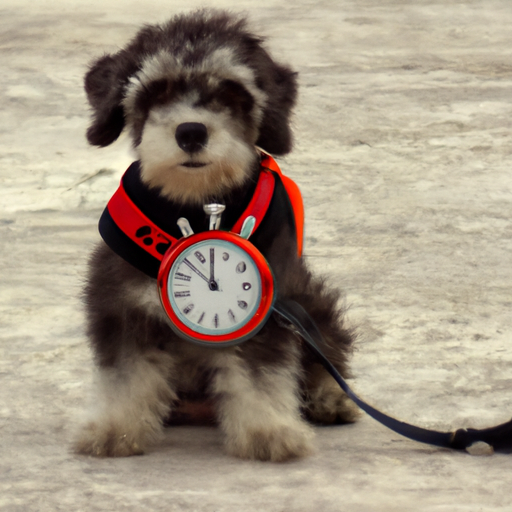Training your puppy to sit on command is an essential part of their development. It is not only a cute party trick, but it’s also a vital tool in managing your pup’s behavior. Here is what you need to know.
Understanding Your Puppy’s Learning Curve
Puppies are just like little kids. They are curious, eager to learn, but also easily distracted. Here’s an estimated timeline of your puppy’s learning journey:
- Week 1-2: Introduction and familiarization with the command. It’s important not to rush and let your puppy understand the command at their own pace.
- Week 3-4: Solidifying the command. By now, your puppy should sit when they hear the command, although they may still need a treat as motivation.
- Week 5-6: Reinforcement. After a month of training, your puppy should be able to sit on command. But it’s important to keep practicing the command to reinforce their learning.
Remember, the actual timeline may vary from puppy to puppy. Some may learn faster, while others may need a little more time.
Training Methodologies
Positive Reinforcement
One of the most effective ways to train your puppy is through positive reinforcement. This means rewarding your puppy when they do something right. Rewards can be in the form of treats, toys, or praise. Here’s how it works:
- Say the command “sit” in a clear, firm voice.
- Wait for your puppy to sit. If they don’t, gently press their back end down.
- As soon as they sit, reward them with a treat and praise.
- Repeat this process multiple times a day in short training sessions.
Lure and Reward
Another popular method is the lure and reward technique. This involves using a treat or toy to guide your puppy into the sitting position. Here’s the step by step process:
- Hold a treat above your puppy’s nose, but just out of reach.
- Slowly move the treat back over their head. Your puppy should naturally sit down as they follow the treat.
- As soon as they sit, give them the treat and praise them.
- Repeat this process during your training sessions.
Common Challenges and Solutions
During the training process, you may encounter a few challenges. Here are some common ones and how to overcome them:
| Challenge | Solution |
|---|---|
| Your puppy is easily distracted | Try to train in a quiet place with no distractions |
| Your puppy doesn’t understand the command | Be patient and consistent. It may take time for them to learn |
| Your puppy doesn’t respond to treats | Try different treats or use toys as rewards |
Consistency is Key
Training a puppy requires patience and consistency. It’s important to practice the “sit” command every day. Try to incorporate it into your daily routine, such as before meal times or walks. This will not only reinforce the command, but also make training a fun activity for your puppy.
FAQs
Q1: At what age should I start training my puppy to sit?
You can start training as soon as your puppy comes home, usually around 8 weeks old.
Q2: My puppy doesn’t seem interested in treats, what can I do?
Try different treats or use toys as a reward. Every puppy is different, so it’s about finding what motivates them.
Q3: My puppy sits but doesn’t stay, what should I do?
Once your puppy has mastered the “sit” command, you can start teaching them the “stay” command.
Q4: How long should training sessions be?
For puppies, keep training sessions short and sweet, around 5-10 minutes each. You can have multiple sessions throughout the day.
Q5: My puppy is not responding to the training, what should I do?
Be patient. If your puppy is still not responding, consider seeking help from a professional dog trainer.
Remember, training a puppy requires patience and consistency. But with time and effort, your puppy will soon be sitting on command. Happy training!



